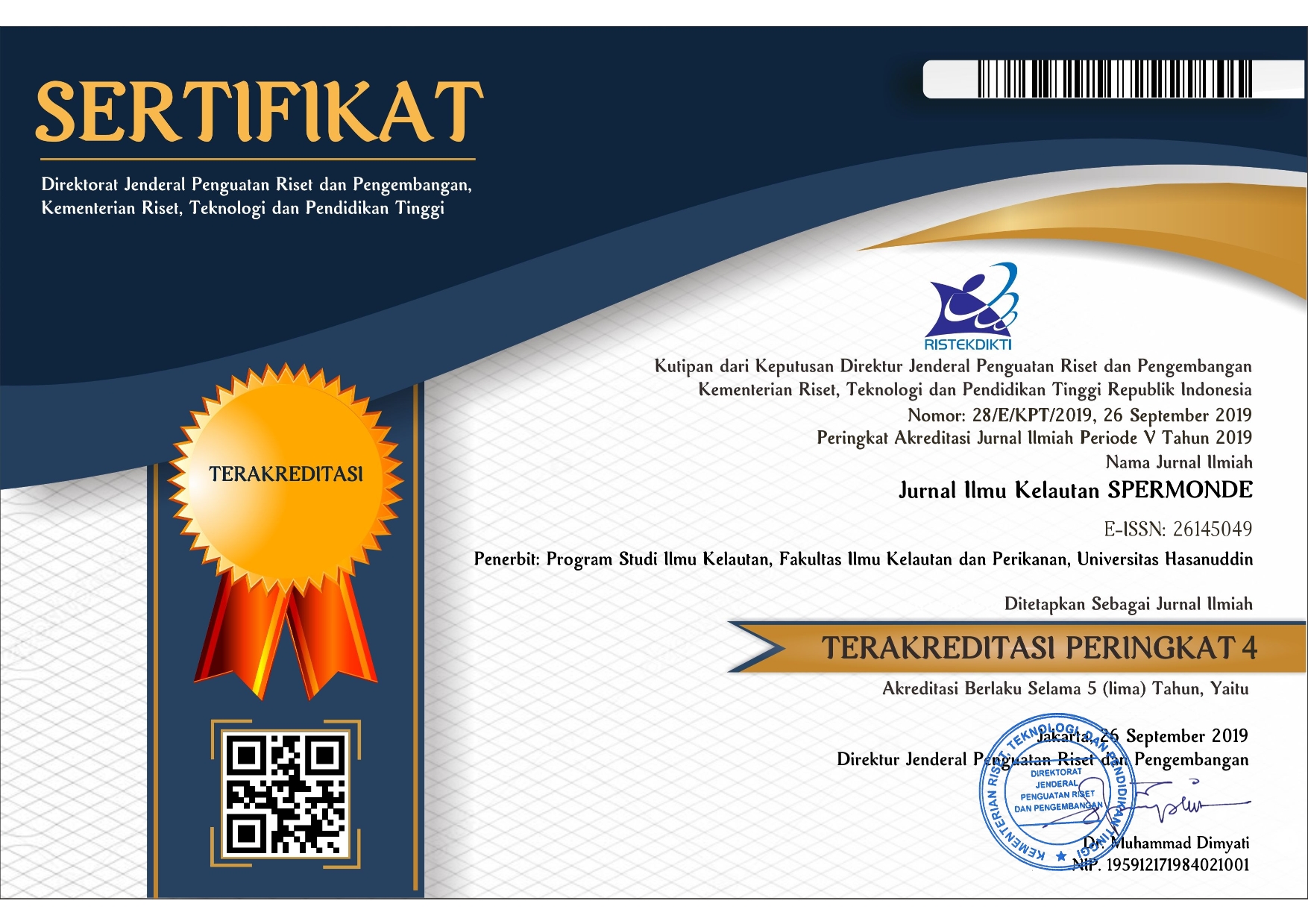CORAL REEF TRANSPLANT SUCCESS RATE IN BONETAMBU ISLAND, SPERMONDE ARCHIPELAGO
DOI:
https://doi.org/10.20956/jiks.v9i2.26776Keywords:
Coral reef, transplant, Spermonde, Bonetambu islandAbstract
The world's coral reefs are under threat from human activities through pollution and habitat changes. This condition is influenced by several factors, such as human activities and natural phenomena. Many efforts have been made by humans to overcome or repair coral reef ecosystems that have been damaged. One of the efforts made is to carry out coral transplants. The main goal of coral transplantation is to improve the quality of coral reefs such as increasing live coral cover, biodiversity and uniqueness of coral topography. The stages of the method carried out in the research include mapping the bottom of the waters (sounding); mapping conditions of water cover; transplantation process and monitoring. This study used the spider skeleton method for the transplant media. The results showed that the percentage of live coral cover ranged from 10% - 25% and it was found that rubble cover dominated up to >70%. During the monitoring process, it was found that algae dominated almost all of the transplant media. The high nutrients and the lack of algae-eating fish resulted in a high algae cover found on the surface of the structure and had an impact on the death of the transplanted corals. Efforts are being made to regularly clean algae to increase the survival rate and replant dead coralDownloads
Download data is not yet available.
Downloads
Published
2023-10-04
Issue
Section
Articles
License

This work is licensed under a Creative Commons Attribution-NonCommercial 4.0 International License.

This work is licensed under a Creative Commons Attribution 4.0 International License










